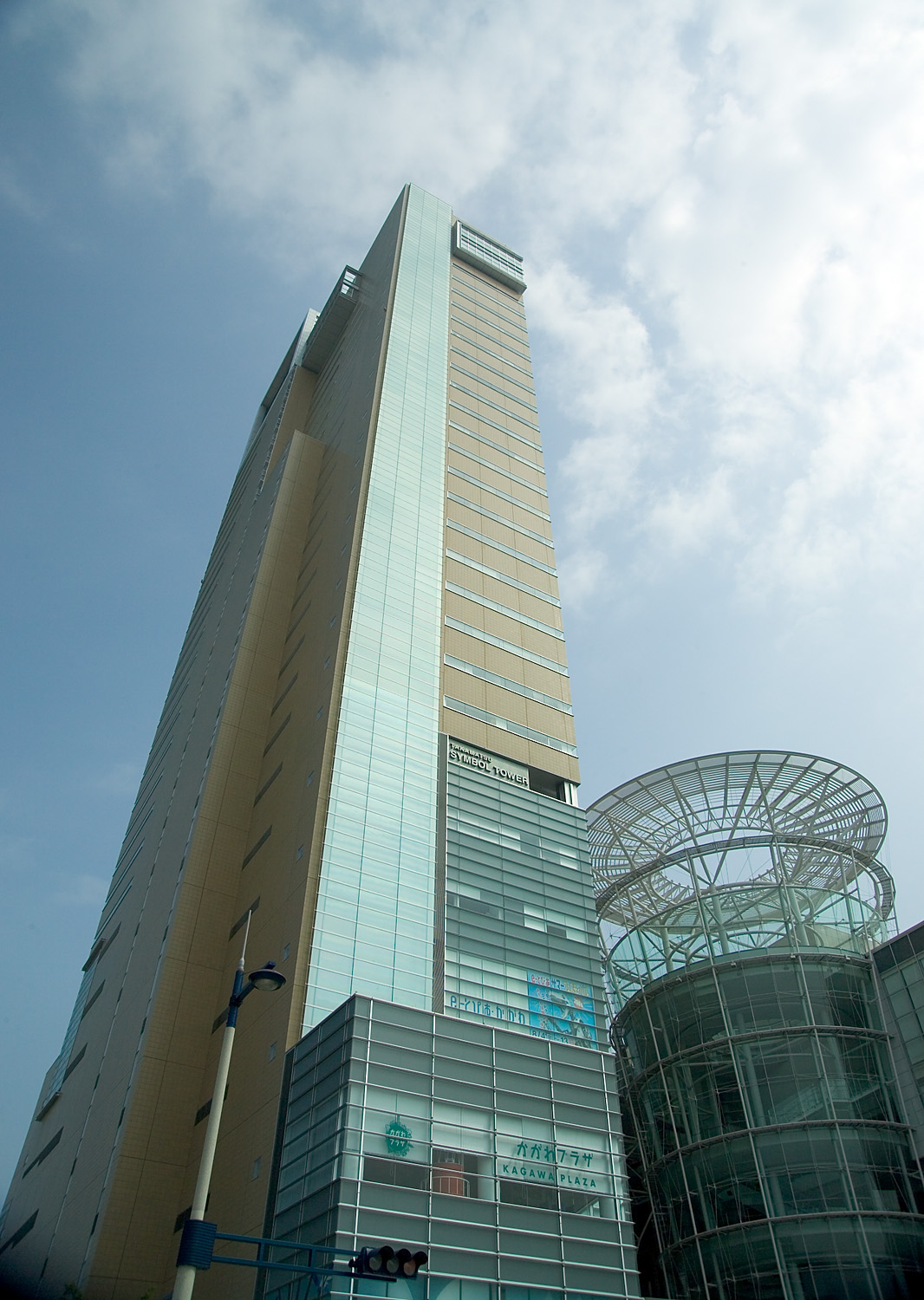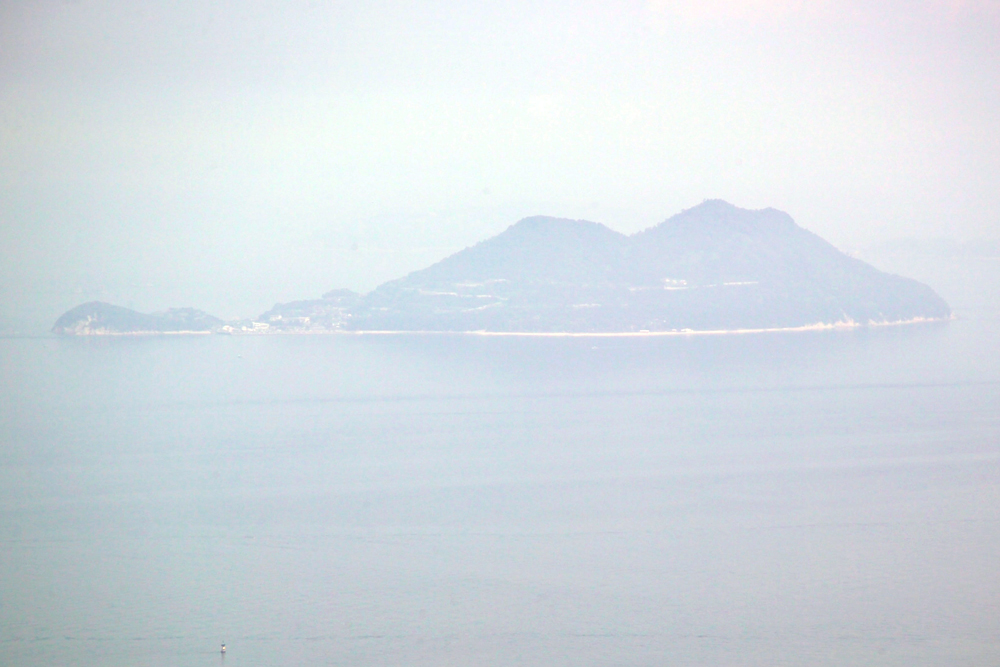|
Megijima
is an island located in the Seto Inland Sea of Japan, north of the city of Takamatsu, and is part of Kagawa Prefecture. It has an area of 2.66 km2, a coastline of 8.9 km, and a population of about 200. Megijima is a popular destination in summer on account of its public beach and close proximity to Takamatsu City (approx. 4 km). Additionally, with over 2000 cherry blossom trees, Megijima also sees an influx of visitors during the springtime when people congregate for cherry blossom viewing. The island has been linked to the mythical island Onigashima ("island of ogres"), visited by the folktale character Momotarō. The caves at the top of Washigamine Summit, as the home of the ogres from that story, are a popular tourist spot. There is an observation platform at the peak of Washigamine Summit where one can get a 360 degree view of the Seto Inland Sea. Megijima is also one of the host sites of the Setouchi Triennale. During the festival period, many temporary and p ... [...More Info...] [...Related Items...] OR: [Wikipedia] [Google] [Baidu] |
Setouchi Triennale
The Setouchi International Art Triennale is a contemporary art festival held every three years on several islands in the Seto Inland Sea of Japan and the coastal cities of Takamatsu and Tamano is a city located in southern Okayama Prefecture, Japan. The city was officially founded on August 3, 1940. As of October 1, 2016, the city has an estimated population of 60,101 and a population density of 580 persons per km². The total area i .... The festival was inaugurated in 2010 with the aim of revitalizing the Seto Inland Sea area, which has suffered from depopulation in recent years. The festival features over 150 artworks by artists from both Japan and overseas, many of whom make use of abandoned homes to host or even become their art installations. The Triennale lasts for eight months with three main sessions; the spring session runs from March to mid-April, the summer session runs from mid-July to early September, and the autumn session runs from October to early November. Whil ... [...More Info...] [...Related Items...] OR: [Wikipedia] [Google] [Baidu] |
Momotarō
is a Folk hero, popular hero of Japanese folklore. His name is often translated as ''Peach Boy'', but is directly translated as ''Peach + Tarō (given name), Tarō'', a common Japanese given name. ''Momotarō'' is also the title of various books, films and other works that portray the tale of this hero. There is a popular notion that Momotarō is a local hero of Okayama Prefecture, but this claim was invented in the modern era. This notion is not accepted as consensus in scholarly circles. Story Momotarō was born from a giant peach, which was found floating down a river by an old, childless woman who was washing clothes there. The woman and her husband discovered the child when they tried to open the peach to eat it. The child explained that he had been bestowed by the Gods to be their son. The couple named him Momotarō, from ''momo'' (peach) and ''Tarō'' (a name meaning 'eldest son in the family'). When he was just five years old, he was able to cut a big tree with just an o ... [...More Info...] [...Related Items...] OR: [Wikipedia] [Google] [Baidu] |
Takamatsu Megijima M3626
270px, Takamatsu City Hall 270px, Aerial view of Takamatsu city center 270px, View from Yashima to Takashima port is a city located in Kagawa Prefecture, Japan. , the city had an estimated population of 414,134 in 190120 households and a population density of 1100 persons per km². The total area of the city is . It is the capital city of the prefecture. Geography Takamatsu is located in central Kagawa Prefecture on the island of Shikoku. The city is located in the Takamatsu Plain, which is part of the Sanuki Plain, and is occupied by a gentle slope as a whole. The northern part faces the Seto Inland Sea, forming a semicircular urban area centered on Takamatsu Port and Takamatsu New Port (commonly known as Shinminato).The western part of the city consists of an alluvial fan formed by the sedimentation of the Koto River. The eastern part is a flooded plain formed by the Kasuga River and Shinkawa River. In the northeastern part of the island, there is Yashima, a table-shaped ... [...More Info...] [...Related Items...] OR: [Wikipedia] [Google] [Baidu] |
Takamatsu, Kagawa
270px, Takamatsu City Hall 270px, Aerial view of Takamatsu city center 270px, View from Yashima to Takashima port is a city located in Kagawa Prefecture, Japan. , the city had an estimated population of 414,134 in 190120 households and a population density of 1100 persons per km². The total area of the city is . It is the capital city of the prefecture. Geography Takamatsu is located in central Kagawa Prefecture on the island of Shikoku. The city is located in the Takamatsu Plain, which is part of the Sanuki Plain, and is occupied by a gentle slope as a whole. The northern part faces the Seto Inland Sea, forming a semicircular urban area centered on Takamatsu Port and Takamatsu New Port (commonly known as Shinminato).The western part of the city consists of an alluvial fan formed by the sedimentation of the Koto River. The eastern part is a flooded plain formed by the Kasuga River and Shinkawa River. In the northeastern part of the island, there is Yashima, a table-shaped pla ... [...More Info...] [...Related Items...] OR: [Wikipedia] [Google] [Baidu] |
Kagawa Prefecture
is a prefecture of Japan located on the island of Shikoku. Kagawa Prefecture has a population of 949,358 (as of 2020) and is the smallest prefecture by geographic area at . Kagawa Prefecture borders Ehime Prefecture to the southwest and Tokushima Prefecture to the south. Takamatsu is the capital and largest city of Kagawa Prefecture, with other major cities including Marugame, Mitoyo, and Kan'onji. Kagawa Prefecture is located on the Seto Inland Sea across from Okayama Prefecture on the island of Honshu, which is connected by the Great Seto Bridge. Kagawa Prefecture includes Shōdoshima, the second-largest island in the Seto Inland Sea, and the prefecture's southern land border with Tokushima Prefecture is formed by the Sanuki Mountains. History Kagawa was formerly known as Sanuki Province. For a brief period between August 1876 and December 1888, Kagawa was made a part of Ehime Prefecture. Battle of Yashima Located in Kagawa's capital city, Takamatsu, the mounta ... [...More Info...] [...Related Items...] OR: [Wikipedia] [Google] [Baidu] |
Summer Pockets
''Summer Pockets'' is a Japanese visual novel developed by Key, a brand of Visual Arts. It was released on June 29, 2018 for Windows and is rated for all ages. ''Summer Pockets'' is Key's 13th game, following its previous games such as '' Kanon'', ''Air'', and ''Clannad''. An expanded version of the game titled ''Summer Pockets Reflection Blue'' was released on June 26, 2020 in Japan. Both the original game and ''Reflection Blue'' have been ported to iOS and Android devices, and the Nintendo Switch. ''Reflection Blue'' has also additionally been ported to the PlayStation 4. An English version of the original game for Windows was released by Visual Arts in 2020. The story is set on a fictional island on the Seto Inland Sea and follows the life of Hairi Takahara, a young man who uses the recent death of his grandmother as an excuse to escape to the island after an unpleasant incident. Once there, he gets to know the townsfolk of Torishirojima and multiple girls who are the focus of t ... [...More Info...] [...Related Items...] OR: [Wikipedia] [Google] [Baidu] |
Ogijima
Ogijima (男木島, おぎじま or おぎしま) is an island in the Seto Inland Sea, in southern Japan. It is next to Megijima (女木島), a few kilometers at sea north of Takamatsu, in Kagawa Prefecture. It is about two kilometers long and less than a kilometer wide. The island is largely mountainous and flat land is scarce. The population in 2010 was 202 people. Ogichō is the island's only village. A notable granite lighthouse is located at the northern end of Ogijima; the lighthouse annex is now a museum. Ogijima was the inspiration for the fictitious island of Okijima in the novel '' Battle Royale''. Some of the sights on the island are also featured in the Key visual novel ''Summer Pockets ''Summer Pockets'' is a Japanese visual novel developed by Key, a brand of Visual Arts. It was released on June 29, 2018 for Windows and is rated for all ages. ''Summer Pockets'' is Key's 13th game, following its previous games such as '' Kanon'' ...'' References External ... [...More Info...] [...Related Items...] OR: [Wikipedia] [Google] [Baidu] |
Seto Inland Sea
The , sometimes shortened to the Inland Sea, is the body of water separating Honshū, Shikoku, and Kyūshū, three of the four main islands of Japan. It serves as a waterway connecting the Pacific Ocean to the Sea of Japan. It connects to Osaka Bay and provides a sea transport link to industrial centers in the Kansai region, including Osaka and Kobe. Before the construction of the San'yō Main Line, it was the main transportation link between Kansai and Kyūshū. Yamaguchi Prefecture, Yamaguchi, Hiroshima Prefecture, Hiroshima, Okayama Prefecture, Okayama, Hyōgo Prefecture, Hyōgo, Osaka Prefecture, Osaka, Wakayama Prefecture, Wakayama, Kagawa Prefecture, Kagawa, Ehime Prefecture, Ehime, Tokushima Prefecture, Tokushima, Fukuoka Prefecture, Fukuoka, and Ōita Prefecture, Ōita prefectures have coastlines on the Seto Inland Sea; the cities of Hiroshima, Iwakuni, Takamatsu, Kagawa, Takamatsu, and Matsuyama, Ehime, Matsuyama are also located on it. The Setouchi Region, Setouchi re ... [...More Info...] [...Related Items...] OR: [Wikipedia] [Google] [Baidu] |
Ogre
An ogre ( feminine: ogress) is a legendary monster depicted as a large, hideous, man-like being that eats ordinary human beings, especially infants and children. Ogres frequently feature in mythology, folklore, and fiction throughout the world. They appear in many classic works of literature, and are most often associated in fairy tales and legend with a taste for infants. In mythology, ogres are often depicted as inhumanly large, tall, and having a disproportionately large head, abundant hair, unusually colored skin, a voracious appetite, and a strong body. Ogres are closely linked with giants and with human cannibals in mythology. In both folklore and fiction, giants are often given ogrish traits (such as the giants in "Jack and the Beanstalk" and " Jack the Giant Killer", the Giant Despair in ''The Pilgrim's Progress'', and the Jötunn of Norse mythology); while ogres may be given giant-like traits. Famous examples of ogres in folklore include the ogre in "Puss in Boots" ... [...More Info...] [...Related Items...] OR: [Wikipedia] [Google] [Baidu] |






